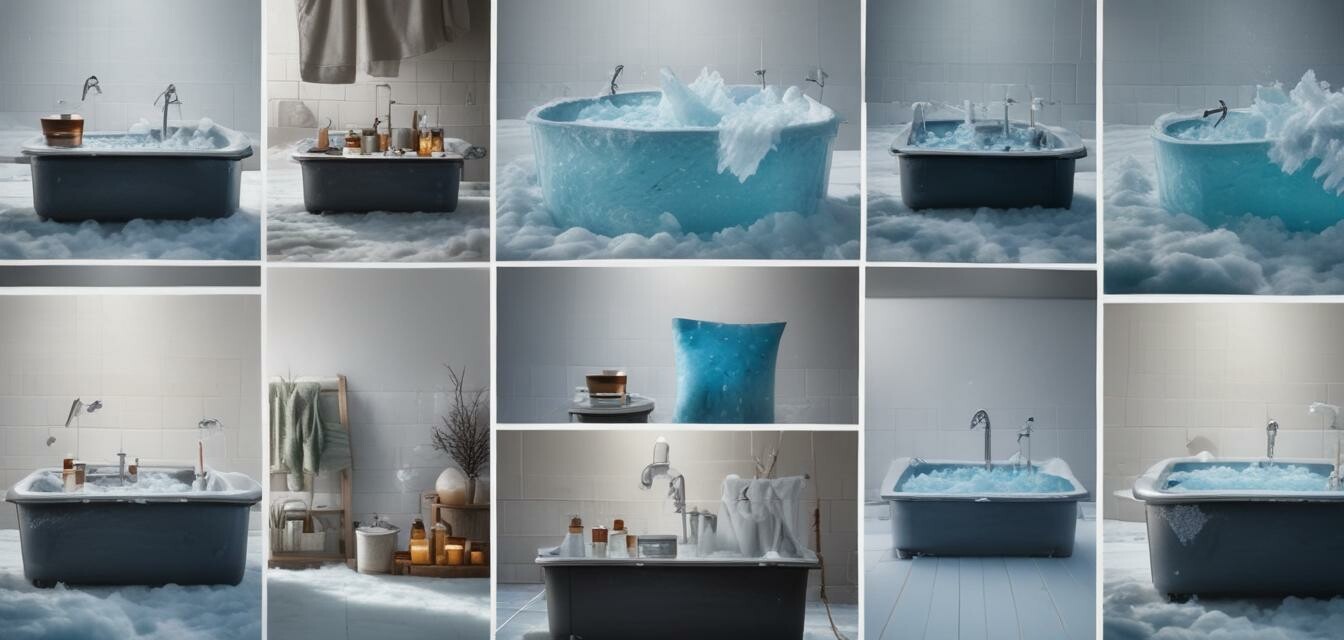
The Science of Cold Exposure: New Findings in 2025
Key takeaways
- Recent studies show significant impacts of cold exposure on inflammation and recovery.
- Technological advancements enhance the effectiveness of DIY ice bath setups.
- Understanding human physiology under cold stress is key to maximizing recovery.
- As 2025 progresses, new trends and technologies are shaping personal recovery practices.
- Cold exposure techniques are becoming more accessible to everyday users.
Cold exposure has been a topic of interest for many years, but recent advancements in the field of science have brought new insights, especially in 2025. As we delve into these findings, it’s essential to understand how cold therapy can potentially revolutionize personal recovery routines and enhance overall health.
Understanding cold exposure
Cold exposure refers to the intentional use of cold temperatures for therapeutic effects. This can range from short bouts of cold water immersion, like ice baths, to controlled environments that conduct cold therapy. Researchers have highlighted various physiological effects that this practice can have on the body, revealing a complex interplay between stress responses, recovery, and overall health.
Physiological effects of cold exposure
When the body is exposed to cold temperatures, several physiological processes are triggered:
- Vasoconstriction: Blood vessels constrict, directing blood towards vital organs and preserving core temperature.
- Metabolic boost: Cold exposure can increase metabolic rates as the body works to maintain its temperature.
- Reduced inflammation: Cold therapy has shown promising results in reducing inflammation and muscle soreness post-exercise.
- Mood enhancement: Anecdotal evidence suggests cold exposure can improve mood and well-being over time.
New discoveries in 2025
The year 2025 marks a turning point in our understanding of cold exposure, with research uncovering notable trends and findings:
1. Enhanced recovery through technology
The development of advanced cold therapy gear has improved the ability of users to set up their own ice bath environments at home. These technologies aim to enhance the benefits of cold exposure while making it more convenient for users. Interested in exploring some options? Check out our Cold Therapy Gear for insights on the latest innovations.
2. Cold exposure in sports
A surge in athletes incorporating cold exposure into their training routines has been observed. New studies show that a structured approach to cold therapy can lead to significant performance gains and faster recovery times.
3. Accessibility of cold exposure techniques
The rising trend towards DIY ice baths means that more individuals are looking into setting up their own systems. This move not only promotes greater awareness of the benefits but also encourages a wider range of users to engage with cold exposure. For ideas on how to set up your own ice bath, visit our DIY Tips and Techniques page.
Table of findings
| Study | Year | Findings |
|---|---|---|
| Effects of cold water immersion on recovery | 2025 | Significant reduction in muscle soreness and inflammation was noted. |
| Cold exposure and metabolic response | 2025 | Increased metabolic rates were observed after controlled cold exposure. |
| The mental health benefits of cold therapy | 2025 | Improvement in mood and stress levels indicated over time with consistent use. |
Cold exposure techniques to consider
For those interested in exploring cold exposure, several techniques are gaining traction:
- Ice baths: Immersing the body in an ice bath for a specified duration.
- Cold showers: Gradually incorporating cold water during showers can be beneficial.
- Cryotherapy: Seeking out cryotherapy sessions for localized cold exposure.
- Cold packs: Utilizing cold packs for particular muscle groups post-exercise.
Pros and cons of cold exposure
Pros
- Cost-effective DIY options available.
- Improved recovery time for athletes.
- Increased awareness of personal health practices.
- Can be a refreshing change to typical recovery methods.
Cons
- Not suitable for everyone; individuals with certain health conditions should consult professionals first.
- Can be challenging to maintain consistent practice.
- Potential discomfort during initial exposure to cold temperatures.
Conclusion
The science surrounding cold exposure continues to evolve, underpinned by fresh discoveries in 2025. From enhanced recovery techniques to the increasing accessibility of effective methods, the future looks promising for DIY ice bath setups and personal recovery practices. To stay ahead, check our blog category for the latest news on trends in ice baths and personal recovery.
